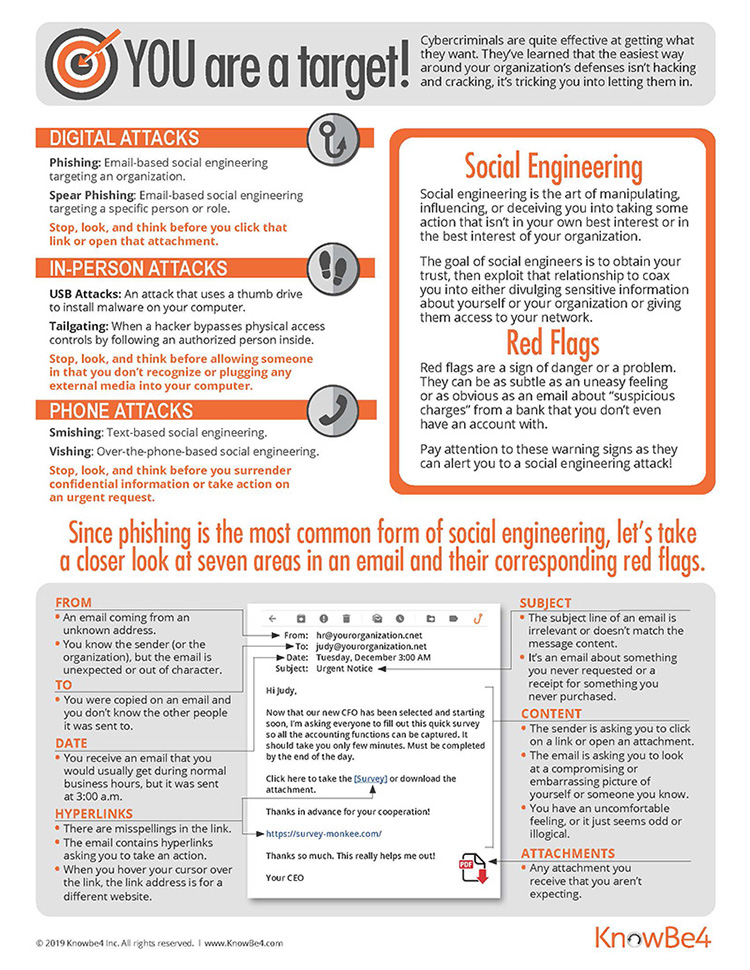No Phishing!
Phishing is usually an attempt to deceive you into thinking a legitimate organization is requesting information from you. These requests for information may look innocent at first glance or may seem to come from a legitimate source, but do not. These scams normally request you to reply to an email or follow a link to a web site and provide your login information or other personal information.
A common form of phishing would be an e-mail (such as the You Are A Target! graphic below) with a generic greeting warning of a change in an account requiring you to verify your account information. These e-mails typically include directions to reply with private information, or provide a link to a web site to verify your account by providing personal information such as name, address, bank account numbers, Social Security numbers, or other sensitive personal information.
- For newer versions of Outlook, right click the email and select Report Phishing
- Older versions of Outlook, complete the information on the Student Help Desk form.
- Name and e-mail address don’t match
- Attempt to prove legitimacy using words such as ‘Official’
- Uses a real organization or company name but incorrect e-mail address
- Poor grammar
- Unsolicited requests for personal information are a clear danger signal
- Misspellings
- Look for the “Possible Spam:” pre-tag in the Subject line
- The sender will threaten consequences or try to evoke fear or emotions to manipulate you into clicking the link or sending personal information back to the attacker
- Never send passwords, bank account numbers, or other private information in an e-mail.
- Avoid clicking links in e-mails, especially any that are requesting private information.
- Be wary of any unexpected e-mail attachments or links, even from people you know.
- Look for ‘https://’ and a lock icon in the address bar before entering any private information.

